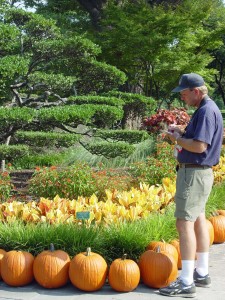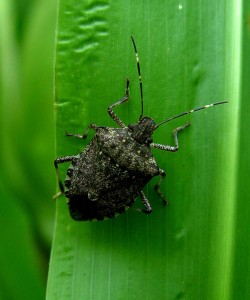Gardening in REAL heat
September 11th, 2010
You might’ve guessed from news of the tornadoes that hit Dallas this week that that’s where I’m at.
Anyone who’s been on a garden trip with me knows that bad weather seems to follow me around. Or vice versa. Wonder where I’m at? Check the top story on The Weather Channel.
Anyway, I’m writing this from the Dallas Arboretum, which didn’t get blown into Kansas but did get slammed by gully-washer rains.
That’s not all that unusual here. Jimmy Turner, the arboretum’s horticulture director (and a fellow Penn State grad), says Dallas weather is “stark” and extreme – deluges and droughts, windstorms and ice storms, and especially the kind of blow-dryer heat we experienced this summer.
This is a good place to see what plants can take punishing heat and which can’t.
Dallas Arbortum’s Trial Gardens even bestow a “FlameProof” seal of approval on varieties that survive the routine 100-degree daytime heat.
Some of the annuals that are doing just fine are vinca, zinnia, blue salvia, angelonia, wax begonias, portulaca, globe amaranth, pentas, ageratum, coleus, lantana and euphorbia. Nicotianas have mostly flamed out, and many of the impatiens were nearly denuded from heat and drought stress. So were many verbena varieties.
It’s good information for us to consider if our summers are going to be anything like the one we’ve just had.
Lots of our favorites struggle in Dallas and are showing signs of scorch (browned-out leaf margins).
Japanese maples, dogwoods, redbuds, river birch, paperbark maple and even a few butterfly bushes aren’t looking very happy.
On the other hand, woody landscape plants such as nandina, hollies, shrub roses, plum yew, magnolias, rose of sharon, crape myrtles and boxwoods showed no signs of trouble.
These are ones we ought to consider if we’re betting on the need to flame-proof central-Pennsylvania gardens.
Come winter, we need to freeze-proof, too. But that’s for another season.
Dallas Arboretum is actually looking very colorful and lush for being in such a harsh gardening climate.
Swoops of bedding annuals are everywhere, shaded groves are filled with both southwestern natives and tropicals, and my favorite spot was a series of “water walls” – sheets of water dropping 15 feet into pools below next to a tropical garden.
It’s in the upper 90s and very humid here. It’s the first place I’ve ever been where standing right next to falling water didn’t even feel the slightest bit cooler.
If you want to see more on the arboretum, check out www.dallasarboretum.org.
Stink bugs and green beetles
More on both of these later, but I wanted to update you quickly on brown marmorated stink bugs and emerald ash borers.
Both of these are bugs you’re going to be hearing a lot more about soon.
A lot of people have been bugged increasingly the last few years with stink bugs getting into the house in fall. These are the dark-brown, shield-shaped bugs that smell bad when you bruise them.
For the first time this summer, this imported pest started feeding on fruits and even some ornamental plants. It did big-time fruit-defacing damage in Adams County.
It remains to be seen how bad of an outdoor pest stink bugs will become. But one thing’s for sure – the stink bug population has exploded this year, so we’re likely to run into lots of stink bugs in the house in the coming weeks. Look for and seal any openings where these bugs might get into your house as the weather cools.
In case you didn’t hear, the emerald ash borer has now been confirmed in Cumberland County. The larval stage of this metallic-green beetle bores into ash trees and can kill them in 2 or 3 years.
It’s a very deadly bug new to the U.S. and one that has the potential to wipe out ash trees like blights decimated American chestnuts and elms.
No need to take any action just yet, but there’s a good chance you’ll soon be faced with a decision on whether to treat your ash trees every year or two to head off the borer or see them die.
More on this bug can be found at www.paemeraldashborer.psu.edu.









